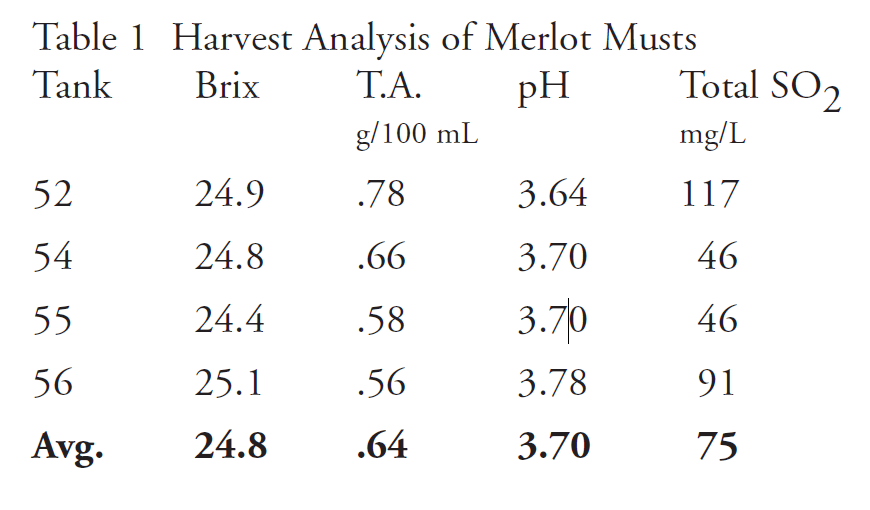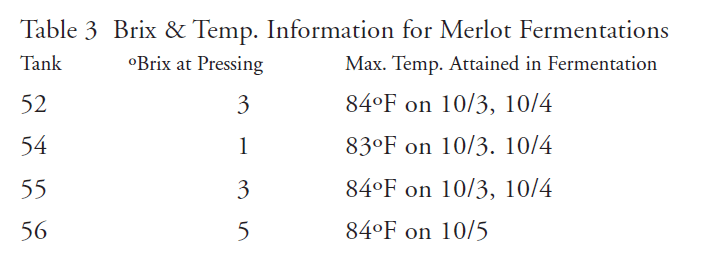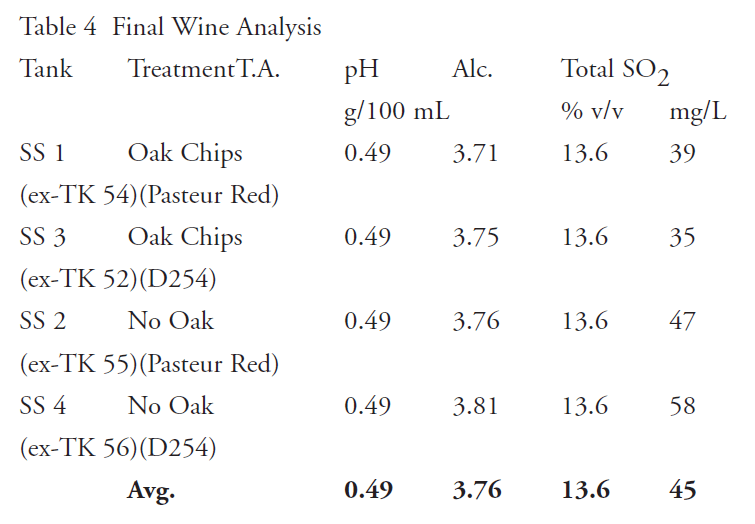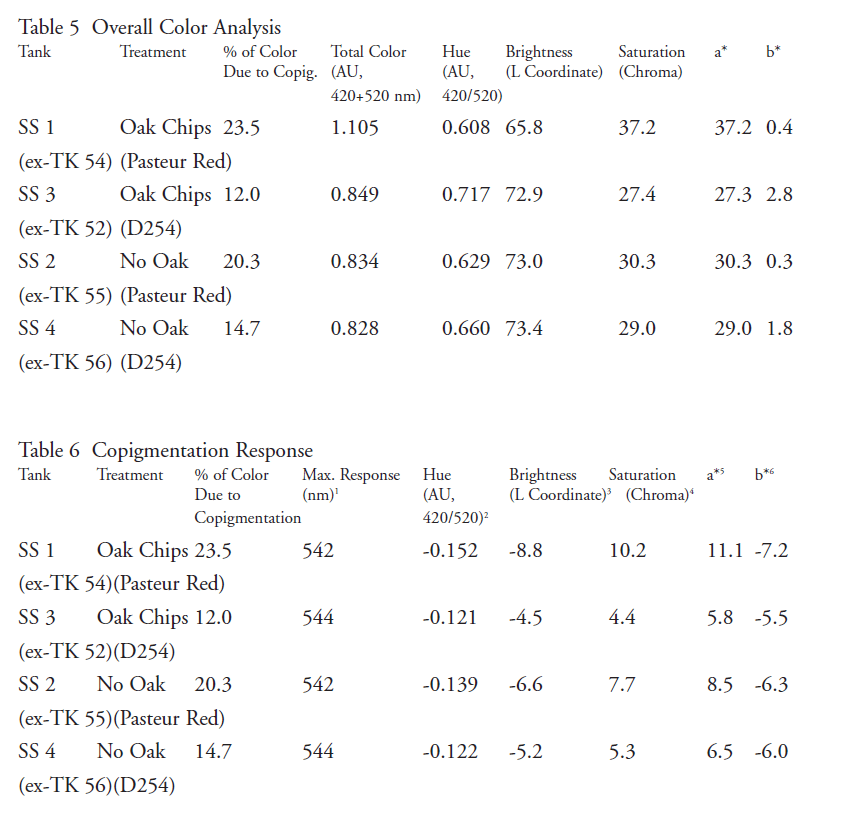Tim Bell, Freemark Abbey
INTRODUCTION
Copigmentation in wine is the association, or “stacking,” of anthocyanins (wine pigments) with phenols. Wine color is enhanced by this phenomenon as it renders pigments colored that would otherwise remain colorless. In addition, copigmentation protects pigments from browning reactions, and may hide in the formed stacks the bitter or astringent flavors from the involved copigmentation phenols.
Just what phenolic compounds are associated with pigments in these stacks is not precisely known. Various winemakers have speculated that phenolics extracted from oak wood may be the right compounds to enhance the copigmentation of a wine. A production-scale trial was conducted to examine this possibility.
MATERIAL & METHODS
Merlot grapes grown at Red Barn Ranch (Napa Valley, California) were harvested from the same vineyard block (Block 5, planted 1989) on September 30, 1999. The grapes were destemmed and crushed into four identical open-topped stainless steel fermenters. Harvest analysis is summarized in Table 1. Table 2 gives additions to the fermenters. Additions were performed on October 1 with the attempt to make the additions at roughly equal rates for all tanks. However, due to harvest-induced brain trauma, two different yeasts were used (see Table 2) which unfortunately introduced an additional variable not intended for this trial.


Free-run juice from each tank was drained off into 55-gallon stainless steel drums on October 5 so that four drums were obtained, each with wine exclusively from a given tank. Some temperature and Brix information is summarized in Table 3.

The wines were inoculated for malolactic fermentation (ML) and were allowed to ferment to dryness and complete ML in the drums. Final analysis is shown in Table 4.

Samples were taken for color analysis on December 13, 1999. The color analysis was performed by ETS Laboratories (St. Helena, CA). All other analyses were performed in the laboratory of Freemark Abbey Winery.
RESULTS
A summary of results for overall color and copigmentation response are presented in Tables 5 and 6, respectively.

1. The wavelength at which copigmentation is having the largest effect. The higher the wavelength, the more purple or blue copigmentation makes the wine appear.
2. The higher this number, the more orange or brown a wine appears. The lower the number, the redder a wine appears.
3. Defines the amount of gray in the color. For copigmentation response, the more negative the number, the darker the wine.
4. A Chroma coordinate shows saturation; the greater the number, the more saturated the color.
5. A coordinate measuring color from green to red on a scale from –60 to 60, respectively.
6. A coordinate measuring color from blue to yellow on a scale from –60 to 60, respectively.
